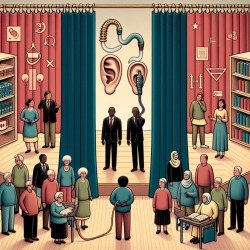Introduction
Antisocial behavior (ASB) in children is a significant concern for educators, therapists, and parents alike. It manifests in various forms, from overt aggression to covert rule-breaking, and can lead to severe long-term consequences if not addressed effectively. Recent research has provided new insights into the genetic and environmental factors contributing to ASB, offering practitioners valuable information to enhance their approaches to intervention.
Research Overview
The study titled "Latent Class Analysis of Antisocial Behavior: Interaction of Serotonin Transporter Genotype and Maltreatment" explores the complex interplay between genetic predispositions and environmental influences in the development of ASB. The research utilized latent class analysis (LCA) to categorize antisocial behaviors and examined the role of the serotonin transporter gene (5-HTTLPR) and maltreatment in influencing these behaviors.
Key Findings
- Distinct Classes of ASB: The study identified different classes of ASB for boys and girls, with boys showing three classes (No Problems, Exclusive Covert, Mixed Covert and Overt) and girls showing two classes (No Problems, Exclusive Covert).
- Influence of Maltreatment: Maltreatment was significantly associated with the likelihood of girls being classified in the Exclusive Covert ASB group, highlighting the critical role of environmental factors in the development of ASB.
- Gene-Environment Interaction: A significant interaction between the 5-HTTLPR genotype and maltreatment was found in girls, where maltreated girls with the SS genotype were 12 times more likely to be in the Exclusive Covert group than in the No Problems group.
Implications for Practitioners
For practitioners working with children exhibiting antisocial behaviors, these findings underscore the importance of considering both genetic and environmental factors in assessment and intervention. Here are some actionable steps practitioners can take:
- Comprehensive Assessment: Incorporate assessments that evaluate both genetic predispositions and environmental histories, such as maltreatment, to better understand the underlying causes of ASB.
- Targeted Interventions: Develop interventions that are tailored to the specific class of ASB identified in the child, with a focus on addressing environmental factors like maltreatment.
- Collaborative Approaches: Work closely with families, educators, and other professionals to create a supportive environment that can mitigate the effects of negative genetic and environmental interactions.
Encouragement for Further Research
While this study provides valuable insights, it also highlights the need for further research to explore the nuances of gene-environment interactions in ASB. Practitioners are encouraged to stay informed about ongoing research and consider participating in studies that can contribute to a deeper understanding of these complex behaviors.
To read the original research paper, please follow this link: Latent Class Analysis of Antisocial Behavior: Interaction of Serotonin Transporter Genotype and Maltreatment.










